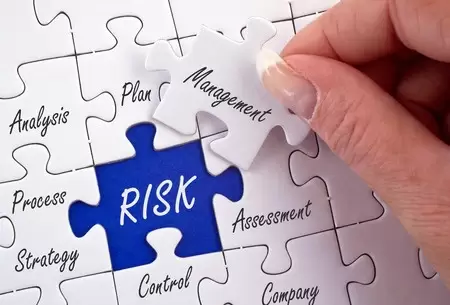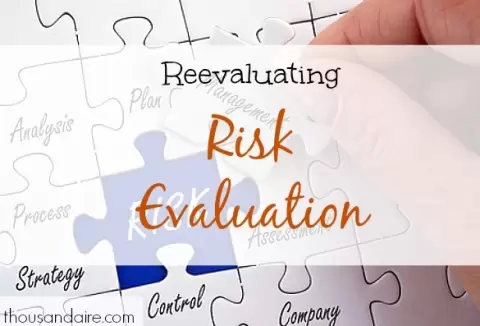Risk is a tricky thing. Most of us consider ourselves competent – or even superior – evaluators of risk, yet the world is full of people who take shockingly foolish chances, as well as those who worry needlessly about every outcome, no matter how remote its chances. This indisputable fact does not suggest that we see our risk-assessing capabilities accurately.
What many of us fail to realize – or more likely, conveniently forget – is that these judgments are subjective. Others are foolhardy or fearful relative to our own perspective; what looks like caution to one person can appear reckless to another.
Lately, I’ve had the occasion to ponder the value of appropriate risk assessment. In our daily lives, we seldom take the time to calculate the risk potential of every decision we make – such a practice would be absurdly impractical, if not impossible. But with investments, quantifying risk serves a purpose, and understanding the nature of risk can help us in both worlds.

A different perspective
Investors tend to think of risk as a negative – the inconvenient price we pay for higher return. While this school of thought isn’t technically incorrect, it does play into our tendency to let our emotions determine what level of risk is acceptable. And with investing, emotion should be eyed with caution.
Consider the issue without value judgments: risk measures volatility, which is essentially return potential – both positive and negative. Seeking higher returns while attempting to avoid risk is problematic, like trying to run toward something and away from it at the same time. It is more productive – and more accurate – to think of risk and return as two sides of the volatility coin. (By return, of course, I mean positive return.)
Perspectives on risk
Investing is a relative world – we often use one asset class as a benchmark to describe another. Stocks offer higher return potential than bonds, for example. The concept of diversification is built on this method of assessment – we seek investments that are different than those we already own or others we are considering. And many of us simply leave it at that. But the concept of relative risk has limited utility without the fixed object of absolute risk.
Absolute risk helps illustrate the interconnectedness of risk and return. Absolute risk should be thought of as overall volatility, or the range that returns can be reasonably expected to fall into at any given time over the course of the investment.
Evaluating investments this way helps investors manage the ups and downs of the market. Take, for example, an investment with an annual return of 10% over the past 20 years, with less risk than its benchmark index. If you don’t look any further than annualized return or relative risk, you may be surprised when your investment loses 20% one year. But if a look at the normal distribution of past returns tells you that the return at any particular time can reasonably be expected to fall between negative 25% and 25%, you’re more likely to stay the course since your 20% loss is well within the historical norm.
Why reevaluate risk?
So why talk about this? What value is there in changing our perspective on risk? Viewing risk as a negative puts the focus on one side of the volatility picture. Judicious risk assessment is about looking at the whole picture, positive and negative.
(Obviously, the theoretical will take us only so far. Metrics for measuring risk are a topic for another day, as is using this information to assess your own personal risk profile.)
I don’t mean to suggest that the psychological factors influencing risk tolerance should be ignored – quite the opposite. But failing to understand the nature of investment risk leaves us with only the psychological, and no empirical evidence to support our choices. Furthermore, understanding how risk is quantified helps keep our emotional sides in check as our investments rise and fall over time.

